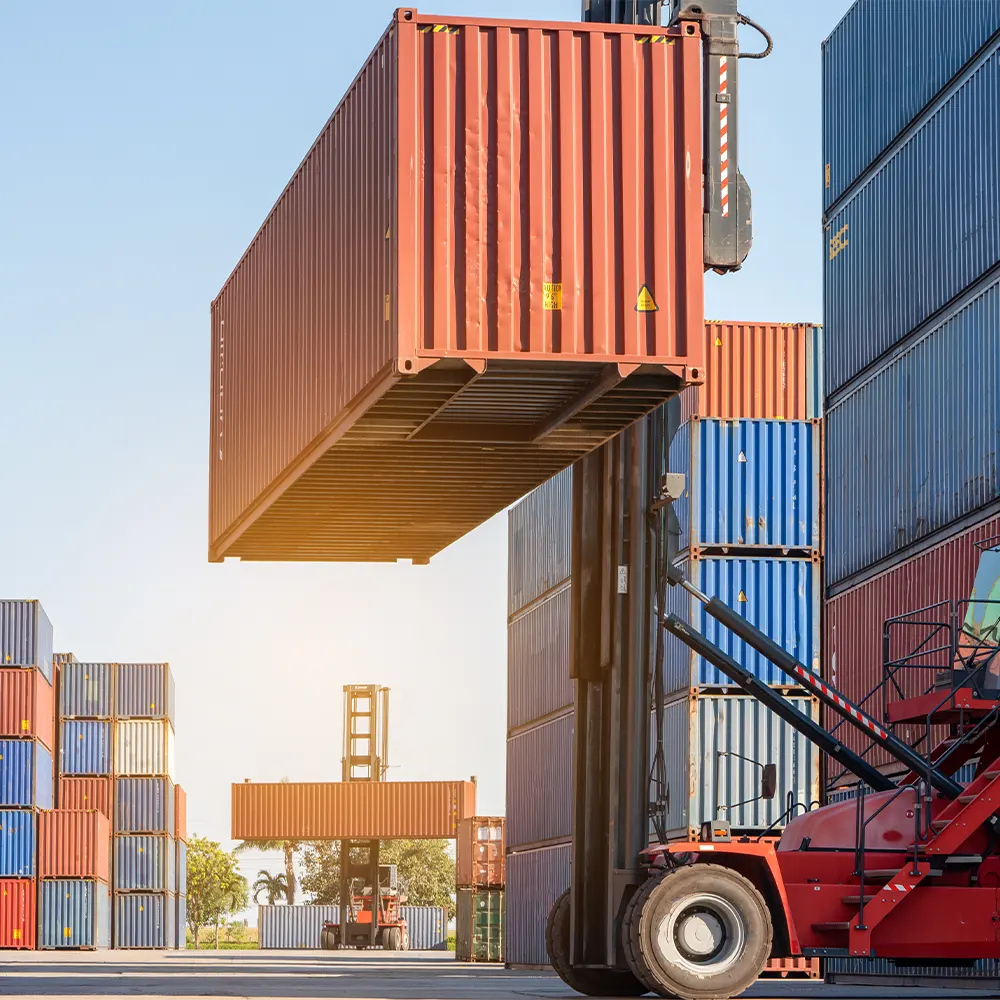Explore Global Market Opportunities with Mauritius
Mauritius Key Trade Agreements
Mauritius provides unparalleled preferential access to almost 70% of the global population through a range of Free Trade Agreements (FTAs). These agreements enable investors to tap into multiple markets, leveraging Mauritius as a strategic hub.
The Mauritius-China Free Trade Agreement (FTA)
The Mauritius-China FTA, signed in October 2019 and effective from 1 January 2021, is Mauritius’ first agreement that includes a chapter on Trade in Services and is also China’s first FTA with an African nation.
Key Components:
- Trade in Goods
- Trade in Services
- Economic Cooperation
- Investment
Market Access
Mauritius enjoys duty-free access to the Chinese market for over 7,000 products, including fish, fruits, rum, garments, medical devices, and more. An additional 700 products will have their tariffs phased out over 5 to 8 years. Furthermore, an exclusive tariff rate quota (TRQ) allows Mauritius to export special sugars at a preferential rate of 15% (down from 50%) starting at 15,000 tons and scaling up to 50,000 tons over 8 years.
Imports from China
Mauritius has reciprocated by granting duty-free access on items like spices and statuettes, while other products will either have phased tariff reductions or remain exempt from liberalization.
Rules of Origin
The agreement specifies a 40% Value Addition rule on Free-on-Board (FOB) pricing, with specific rules applied to certain products under a “Change in Tariff Heading” (CTH) requirement.
Trade in Services
Mauritian service providers can now access over 40 service sectors in China, including financial services, telecommunications, ICT, construction, and health services. Mauritius businesses can also operate in China as wholly owned entities or joint ventures.
Economic Cooperation
The agreement also includes a collaborative effort in 10 areas, such as industrial development, research-based manufacturing, technology exchange, and financial sector cooperation.
Export Procedures
To qualify for duty-free treatment in China, exports from Mauritius must be accompanied by a Mauritius-China FTA Certificate of Origin, approved electronically by MRA Customs.
This FTA opens up significant trade and investment opportunities, reinforcing Mauritius as a gateway to the Chinese market.
CECPA with India: Strengthening Mauritius-India Relations
On 22nd February 2021, Mauritius and India signed the Comprehensive Economic Cooperation and Partnership Agreement (CECPA), which came into effect on 1st April 2021. This landmark agreement deepens the trade and economic partnership between the two nations, enhancing their already robust cultural and trade ties.
The CECPA opens the doors of a vast 1.3 billion-person market to Mauritius, offering significant opportunities for businesses and industries to expand their reach.
Structure of the Agreement
The CECPA consists of 8 chapters, each outlining key aspects of the partnership:
- Objectives
- Trade in Goods
- Rules of Origin
- Sanitary and Phytosanitary (SPS) Measures
- Technical Barriers to Trade
- Trade in Services
- Dispute Settlement
- Institutional and Final Provisions
Key Components
The agreement is built around three primary components:
- Trade in Goods: Promoting the exchange of goods with reduced tariffs and streamlined procedures.
- Trade in Services: Facilitating service-based industries like IT, financial services, and tourism.
- Economic Cooperation: Yet to be signed, this component aims to foster collaboration in investment and economic development initiatives.
The CECPA represents a significant step toward strengthening the bilateral relationship, fostering economic growth, and enhancing the global competitiveness of both countries.
ESA-EU Economic Partnership Agreement (EPA)
The Eastern and Southern African States (ESA)—Mauritius, Madagascar, Seychelles, and Zimbabwe—signed an interim Economic Partnership Agreement (EPA) with the European Union in August 2009. The Union of Comoros joined the group in January 2019, further strengthening the regional collaboration by ratifying the Agreement.
Key Features of the EPA
Trade in Goods
The Agreement centers on promoting trade in goods, offering:
- Full Duty-Free and Quota-Free Market Access into the EU for goods originating in ESA states, ensuring secure and predictable trade terms.
- A framework for progressive liberalization of ESA goods markets, fostering regional economic integration.
- Enhanced market access conditions aimed at ensuring that all participating ESA states benefit from improved trade terms.
Objectives
- Promote Trade: Strengthen trade relations between the EU and ESA states, enabling export-led growth.
- Global Integration: Facilitate the integration of ESA economies into the global market.
- Economic Stability: Provide long-term, predictable access to the EU market, helping to secure economic growth.
- Market Liberalization: Gradually open ESA markets while ensuring no state is worse off under the Agreement.
This interim EPA serves as a vital bridge to deeper economic integration, aiming to drive development, boost exports, and solidify the ESA region’s position in global trade.
ESA-UK Economic Partnership Agreement (EPA)
The Eastern and Southern African States (ESA), comprising Mauritius, Seychelles, and Madagascar, implemented the ESA-UK Economic Partnership Agreement (EPA) on 1st January 2021, following the UK’s departure from the European Union.
Key Components of the ESA-UK EPA
-
Trade in Goods:
- The Agreement ensures duty-free and quota-free access to the UK market for goods originating in ESA states, promoting seamless trade continuity.
- A special provision includes an automatic derogation for 6,200 tons of non-originating tuna (used in canned tuna production) and 341 tons of tuna loins, shared among Mauritius, Seychelles, and Madagascar.
-
Fisheries:
- Dedicated provisions address the sustainable use and management of fisheries, supporting the significant economic role of seafood exports for ESA states.
-
Development Cooperation:
- The EPA includes measures to foster capacity-building, trade development, and regional integration within the ESA states, enabling long-term economic growth.
Future Negotiations (Rendez-Vous Clause)
The Agreement incorporates a Rendez-Vous Clause, signaling intentions to negotiate additional areas in the future, such as:
- Trade in Services
- Investment
- Trade Facilitation
- Competition Policy
These expansions aim to deepen economic ties and address evolving trade dynamics.
This Agreement ensures continuity of trade relations between ESA states and the UK, while laying the groundwork for further collaboration and growth.
Africa Growth and Opportunity Act (AGOA)
The Africa Growth and Opportunity Act (AGOA), enacted by the U.S. Congress in May 2000, offers duty-free access to the U.S. market for nearly 7,000 products from eligible Sub-Saharan African countries. AGOA is set to expire in 2025 unless renewed, making it a pivotal trade framework for African economies.
Key Features of AGOA
- Duty-Free Access: Over 7,000 tariff lines, including apparel, agricultural products, and industrial goods.
- Focus on Sub-Saharan Africa: Designed to boost economic growth and integration into global markets.
- Eligibility: Benefits are contingent on meeting specific governance, labor, and human rights criteria.
Amendments and Expansions of AGOA
| Date | Amendment | Key Provisions |
|---|---|---|
| 2000 | AGOA | Liberalized access to the U.S. market for Sub-Saharan countries, except those with Free Trade Agreements with the U.S. |
| 2002 | AGOA II | Included Botswana and Namibia as Lesser Developed Countries (LDCs); added textile-specific provisions. |
| 2004 | AGOA III | Extended AGOA to September 2015; expanded Third Country Fabric Provision to September 2007. Mauritius designated as an LDC. |
| 2006 | AGOA IV | Extended Third Country Fabric Provision to 2012; introduced abundant supply provisions. |
| 2012 | AGOA IV (cont’d) | Further extended Third Country Fabric Provision to September 2015. |
| 2015 | AGOA V | On 29 June 2015, AGOA was extended for 10 years, now set to expire in 2025. |
Mauritius and AGOA
- Mauritius is one of the 39 AGOA-beneficiary countries in 2021, enjoying duty-free access to the U.S. market.
- The list of beneficiaries is periodically reviewed by the U.S. Administration to ensure compliance with AGOA eligibility requirements.
- In 2004, Mauritius gained status as an LDC, enabling access to additional benefits under the framework.
Generalised System of Preferences (GSP)
The Generalised System of Preferences (GSP), established in 1971 by UNCTAD, is a trade preference scheme aimed at promoting exports and economic growth in least developed and developing economies. It is a non-reciprocal and non-discriminatory framework, providing duty-free or preferential access to selected goods from beneficiary countries.
Key Features of GSP
- Promotes Exports: Encourages export-led growth by reducing or eliminating tariffs on eligible products.
- Customised Schemes: Each participating developed country has its own GSP scheme, tailored to its trade priorities.
- Periodic Reviews: Schemes are typically reviewed every five years to ensure relevance and compliance.
Countries Offering GSP Benefits to Mauritius
Mauritius enjoys preferential treatment under GSP schemes from the following nations:
- Japan: Duty-free or reduced tariff access for eligible Mauritian exports.
- Norway: Benefits for goods manufactured in Mauritius.
- Switzerland: Includes a range of industrial and agricultural products.
- United States (USA): Offers preferential tariffs under its own GSP scheme for select goods.
- Customs Union of Belarus, Kazakhstan, and Russia: Provides market access benefits for Mauritian exports.
The GSP framework enables Mauritius to enhance its export competitiveness in key global markets, driving economic growth and fostering international trade partnerships.
Common Market for Eastern and Southern Africa (COMESA)
The COMESA Free Trade Area (FTA), established on 31st October 2000, is the first Free Trade Area on the African continent. It consists of 16 member states trading on a duty-free quota-free basis.
Key Features of COMESA
- Duty-Free Trade: Mauritius, as a member, has eliminated customs tariffs on trade with participating members and is working towards removing non-tariff barriers.
- Groups of Member States:
- Group I: Members participating fully in the FTA benefit from 100% duty-free access to Mauritius.
- Group II: Members not fully participating receive a 90% tariff reduction on Most-Favoured Nation (MFN) rates.
- Recent Membership: Somalia and Tunisia have joined COMESA recently.
COMESA Member States
Group I (FTA Members):
- Arab Republic of Egypt
- Republic of Burundi
- Republic of Djibouti
- Republic of Kenya
- Republic of Madagascar
- Republic of Malawi
- Republic of Mauritius
- Republic of Seychelles
- Republic of Sudan
- Republic of Uganda
- Republic of Zambia
- Republic of Zimbabwe
- Rwandese Republic
- State of Libya
- Union of Comoros
Group II (Non-FTA Members):
- Democratic Republic of Congo
- Federal Democratic Republic of Ethiopia
- Kingdom of Eswatini
- State of Eritrea
Participation in COMESA enhances Mauritius’ trade market opportunities within Africa, providing access to a vast market while fostering economic integration and regional cooperation.
Southern African Development Community (SADC)
Trade under SADC is governed by the SADC Protocol on Trade, which became effective in 2000. The Protocol aims to promote trade liberalization, economic integration, and sustainable development among member states.
Key Features of SADC Trade
- Customs Duties Liberalization:
- 2000-2008: Gradual removal of customs duties on 85% of tariff lines.
- 2012: Elimination of tariffs on ‘sensitive products’.
- 2014: Mauritius completed its tariff liberalization commitments under SADC.
- Duty-Free Access: Mauritius provides duty-free and quota-free access to all SADC member states except Angola, the Democratic Republic of Congo, and Comoros, which have not yet ratified the SADC Protocol on Trade.
SADC Member States
- Angola (yet to join the FTA; offer recently submitted)
- Botswana
- Comoros (not part of the FTA)
- Democratic Republic of Congo (not part of the FTA)
- Lesotho
- Madagascar
- Malawi
- Mauritius
- Mozambique
- Namibia
- Seychelles
- South Africa
- Swaziland (Eswatini)
- United Republic of Tanzania
- Zambia
- Zimbabwe
The SADC Protocol on Trade enhances Mauritius’ access to a regional market while fostering economic cooperation and trade diversification. It also supports regional integration efforts and strengthens ties with other African economies.
African Continental Free Trade Area (AfCFTA)
The AfCFTA, signed in March 2018 and operational from 1st January 2021, is a groundbreaking initiative aimed at fostering economic integration across Africa. It is the world’s second-largest trading arrangement, following the WTO, encompassing 55 African countries.
Key Objectives
- Single Market Creation: A unified continental market for goods and services.
- Facilitation of Movement: Enhanced mobility for people, investments, and goods.
- Industrial Development: Promoting regional value chains and industrial growth.
- Sustainable Growth: Advancing economic stability and inclusive development.
Duty-Free Trade Conditions under AfCFTA
Operators can benefit from duty-free treatment for exports under AfCFTA provided:
- The product (HS code) is not listed as excluded or sensitive by the destination country.
- The destination country has signed and ratified the agreement.
- The destination country is administratively ready to issue an AfCFTA Certificate of Origin.
Implementation Status
Trade commenced on 1st January 2021 among countries that have ratified the agreement and submitted their market access offers. This provides Mauritius with opportunities to access a vast African market, diversifying trade partnerships and strengthening intra-African trade.
Indian Ocean Commission (IOC)
The Indian Ocean Commission (IOC) is an intergovernmental organization aimed at fostering collaboration among the Indian Ocean islands. Its focus is on strengthening diplomatic, economic, and commercial ties among its member states.
Member States
- Mauritius
- Madagascar
- Reunion
- Comoros
- Seychelles
Trade Under the IOC
Free trade is limited to Mauritius and Madagascar under the IOC trade regime. Products meeting the IOC Rules of Origin enjoy duty-free access between these two nations, enhancing bilateral trade opportunities.
Tripartite Free Trade Area (TFTA)
The Tripartite Free Trade Area (TFTA) is an ongoing agreement between three major African regional economic communities (RECs):
- Common Market for Eastern and Southern Africa (COMESA)
- Southern African Development Community (SADC)
- East African Community (EAC)
Objective
The TFTA aims to enhance the economic integration of Southern and Eastern Africa. The agreement focuses on three core pillars:
- Market Integration
- Infrastructure Development
- Industrial Development
The ultimate goal of the TFTA is to achieve Duty-Free and Quota-Free treatment on all products, ensuring unrestricted trade between member states, provided the products meet the Rules of Origin.
Member States
The TFTA includes 27 member states:
- Angola
- Botswana
- Burundi
- Comoros
- Democratic Republic of Congo
- Djibouti
- Egypt
- Eritrea
- Eswatini
- Ethiopia
- Kenya
- Lesotho
- Libya
- Madagascar
- Malawi
- Mauritius
- Mozambique
- Namibia
- Rwanda
- Seychelles
- South Africa
- Sudan
- Tunisia
- Uganda
- United Republic of Tanzania
- Zambia
- Zimbabwe
World Trade Organization (WTO)
Mauritius has been a member of the World Trade Organization (WTO) since its establishment in 1995. The WTO succeeded the General Agreement on Tariffs and Trade (GATT), which aimed to reduce and eliminate trade barriers such as tariffs and quotas.
The WTO operates based on two key principles:
-
Most-Favoured-Nation (MFN) Treatment:
This principle mandates that countries cannot discriminate against their trading partners. If a country grants any privilege, special treatment, or concession to one WTO member, it must extend the same to all other member countries, unless a specific trade agreement is in place. -
National Treatment:
This principle ensures that imported and locally produced goods are treated equally once they enter the market. It extends beyond goods to services, trademarks, copyrights, and patents, ensuring that foreign and domestic products or services receive the same treatment within a country’s borders.
Disclaimer:
The content provided on Mauritius.com is intended for informational purposes only. While every effort is made to ensure the accuracy of the information, Mauritius.com does not guarantee the completeness or reliability of the content. For official and updated details, please refer to the original sources or consult with a qualified professional. Mauritius.com will not be held liable for any decisions made based on this content.












